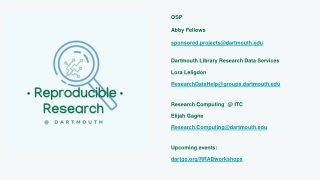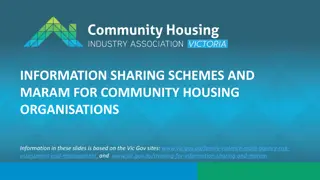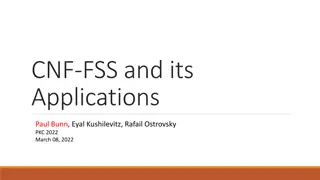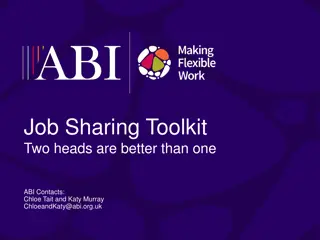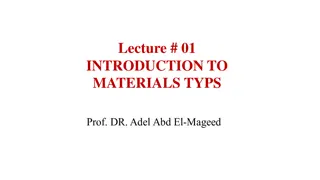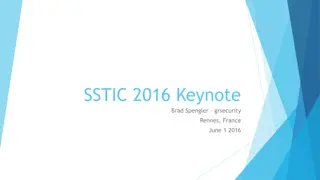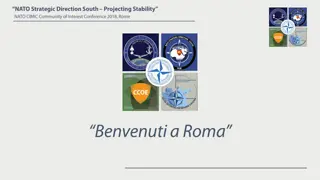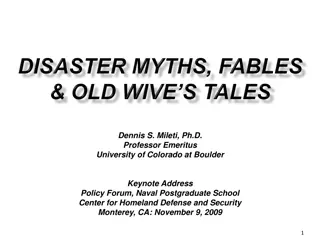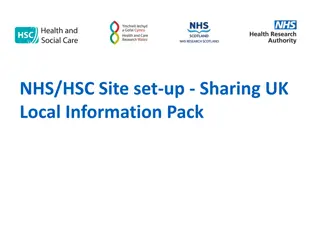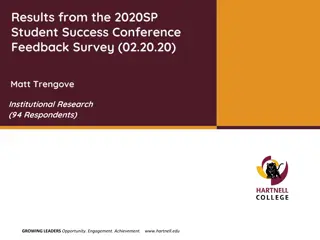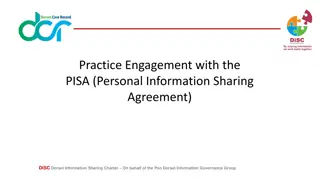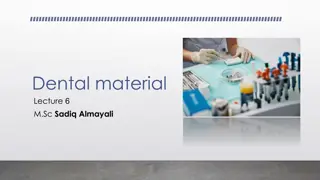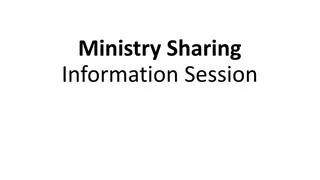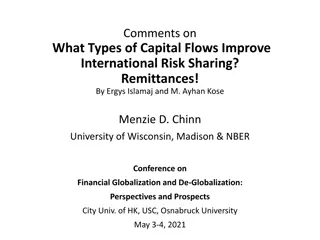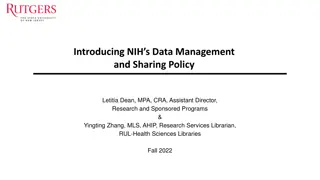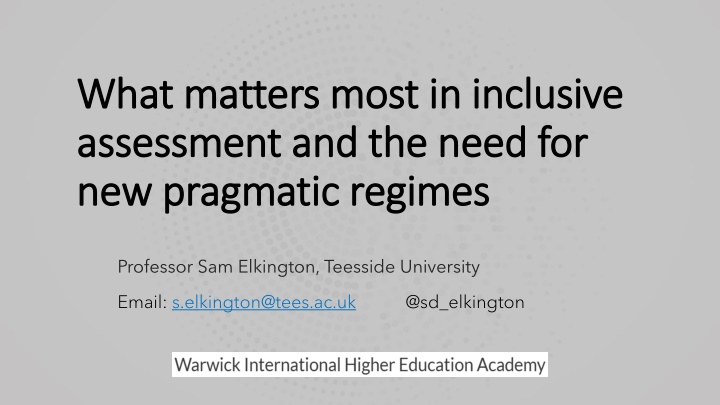
Importance of Inclusive Assessment Practices and New Regimes
Explore the essence of inclusive assessment, the demand for innovative approaches, and the necessity for pragmatic regimes in academia. Professor Sam Elkington sheds light on critical aspects like assessment redesign, academic integrity, student diversity, and the evolution of assessment methodologies towards student-centered learning experiences. Embrace a paradigm shift in assessment design to enhance student engagement and foster a more inclusive educational environment.
Download Presentation

Please find below an Image/Link to download the presentation.
The content on the website is provided AS IS for your information and personal use only. It may not be sold, licensed, or shared on other websites without obtaining consent from the author. If you encounter any issues during the download, it is possible that the publisher has removed the file from their server.
You are allowed to download the files provided on this website for personal or commercial use, subject to the condition that they are used lawfully. All files are the property of their respective owners.
The content on the website is provided AS IS for your information and personal use only. It may not be sold, licensed, or shared on other websites without obtaining consent from the author.
E N D
Presentation Transcript
What matters most in inclusive What matters most in inclusive assessment and the need for assessment and the need for new pragmatic regimes new pragmatic regimes Professor Sam Elkington, Teesside University Email: s.elkington@tees.ac.uk @sd_elkington
Whats the plan? 1. What do we know? 2. What is going to matter most? 3. What do we know, now? 4. Time to pause, Q & A 5. (Re)Framing Inclusive Assessment We will be making use of Padlet The Q&A Padlet will be live throughout the session. Please feel free to drop questions and/or comments on to the Padlet or use the chat space.
What do we know? Time to rethink assessment and feedback High-risk nature of many established assessment practices A lack of relevance to students future lives A limited range of assessment types and formats Feedback often an afterthought in assessment design AI in learning, teaching and assessment ???
What do we know? Calling out Mindless Assessment Designs Assessment has struggled to deal with the increasing diversity of students in higher education [...] In fact, assessment is deemed so inaccessible that assessment accommodations (e.g., extra time in exams) are administered . (Nieminen, 2023: 2) Being proactive about academic integrity what are we modelling for? Prevention methods for academic dishonesty (or cheating ) will be limited in their success if students needs and attitudes have not also been addressed (Holden et al., 2021)
What do we know? Assessment on Purpose Assessment of Learning The institutional quality-assured processes that lead to a qualification. Assessment for Learning Learning designs emphasising formative opportunities that feed forward to future improvement. Assessment as Learning The lived experience of students and staff when active learners contribute to decision-making and can monitor and regulate their own learning. Moving beyond a task genre (Bearman et al., 2022) Assessments designed instead for a unique time and place, accounting for challenge, setting, and circumstance(s). Image from Jisc 2022
What do we know? Rethinking student involvement in authentic assessment the most important way in which to understand student involvement in assessment is to appreciate and foster the role that assessment plays in developing students as both individuals and active and fulfilled citizens. Thus, we need to shift our focus from tasks that students are involved in and instead have as a primary concern the person the student becomes through engagement with assessment . (McArthur, 2021: p. 8) Assessment-as-Inclusion (Ajjawi et al., 2023). Underpinned by an understanding that students as individuals have strengths, qualities, and skills that will be beneficial for their own learning, as well as that of their peers
Flexibility in Assessment Underpinned by two inter-related dimensions 1) A focus on practical improvement and efficient performance The practical and technological drivers for flexibility in modes of accessing and delivering learning, teaching, and assessment in higher education. 2) A focus on human capabilities A view of flexibility as an educational outcome, emphasising the ability of people to think, act, live and work differently in complex, uncertain and changeable scenarios. Enabling diversification in assessment (O Neill & Lisa Padden, 2022) Pedagogically, flexibility in assessment provides students with the opportunity to take greater responsibility for their learning and to engage in activities that reflect their own needs.
INCLUSIVE LEARNING-FOCUSED SHARED AND TRANSPARENT Assessment activities need to be aligned at course level to ensure assessment processes and tasks are authentic, designed to achieve key outcomes, and direct students towards appropriate learning. Assessment and feedback processes are clearly articulated, relevant to context, and designed to enable meaningful action in the ways they foster student learning. Assessment processes need to provide an accessible, equitable and relevant learning experience for all students across a course of study. Elkington, S. (2021). Scaling Up Flexible Assessment, In P. Baughan (Ed.) Assessment and Feedback in a Post- Pandemic Era: a time for learning and inclusion. Advance HE Pedagogic Innovation Series: pp. 31-41.
What do we know, now? The learning benefits of collaborative digital tools Enabled key aspects of inclusive practice: Collaboration(peer review / feedback) Self-determined progress (self-assessments and review) Instructional support (focusing on improvement) Gooneratne, S. and Elkington, S. (2021). Utilising Microsoft OneNote Class Notebooks to facilitate differentiated formative assessment and feedback with undergraduate Chemical Engineering students. Putting the Student at the Heart of Assessment and Feedback: Equality, Diversity and Partnership. Assessment and Feedback Symposium 2021, November 4th Socio-emotional support (personalised feedback)
What do we know, now? Multi-modal strategies are a vector for change in healthcare assessment Effective access to assessment information Engage a broader range of tasks Automated feedback Learning-focused dialogue Support for productive peer and group assessment. educators must try to design assessments that foster the kinds of attitudes and dispositions, as well as the knowledge and skills learners will need for a variety of situations they will be confronted with. Elkington, S., Chesterton, P., and Cosson, P. (2022). Student Engagement in the Time of a Pandemic, Student Engagement in Higher Education Journal, Special Issue, Vol. 4, No. 4.
What do we know, now? Prospects for inclusive assessment (as a post-digital) practice Assessment designs need to be adaptable in how students might navigate and satisfy learning outcomes. A product of a dynamic, shared, relationship between the teacher, the student, the digital tools, and technologies deployed, and the broader context none of which remain static. Requires educators to be proficient in both flexible assessment design and the orchestration of flexible assessment practices, being responsive to the unfolding lived assessment experiences they share with students. Re-framing how educators make judgements, not about assessment in general, but about the combinations and configurations of diverse practice elements.
Assessment: a practice perspective Assessment: a practice perspective What are we doing to meet students where they are? Assessment contextualised as sites of practice connected to what goes on in those locations at any given time. A programme-focused view integrated assessment and feedback delivered over time. Practices viewed as dispositions and strategies engaging and influencing student learning and producing information about students work to inform future development. Assessment-as-practiced(Boud et al., 2018) the various facets of the human and material activities that constitute assessment: their location in particular places and times, the relationships between the individuals and the various kinds of information provisions and documentation that are created and utilised, what is produced and how that comes about (p.1110)
Teaching and Learning Regimes Teaching and Learning Regimes A Practice Sensibility (Trowler, 2020) Practically paying attention to a particular context and our influence within and upon it. An emergent model of practice and learning that is always situated. o Entangled practice (Fawns, 2022) learning outcomes are negotiated, contingent and relational. o Socio-material engagement (Gravett and Ajjawi, 2022) the relations among the everyday interactions, routines and material arrangements in particular environments and forms of knowing generated from these. Pragmatic Regimes (Th venot, 2001) the (situated) devices which orient and govern our way(s) of engaging with and understanding our environment .
Assessment Assessment- -as as- -Practice Practice Practice (Outcomes) Practise (Processes) o Encourage activeparticipation of the widest range of students that still results in valid inferences about their learning and performance. o Utilise Adaptive learning designs that can capture actual student learning as it takes place. o Utilise different forms of integrated (formative) activities to scaffold and model for student engagement and learning. o Provide students with an equivalent, rather than identical, opportunity to demonstrate their ability. o Enable developmental feedback on student progress that encourages them to adopt more active, participative, and dialogic roles. o Embed assessment arrangements and processes that are relevant, constitutive, and prospective for student learning The outcome of practical judgement grounded in (inter)subjective experience responding to the complexity of actions, the multiplicity of demands, and the need for different kinds of representational work in how teaching and assessment arrangements are structured and deployed (Elkington, 2022).
4Practice Frames for Inclusive Assessment (Elkington, 2023)

